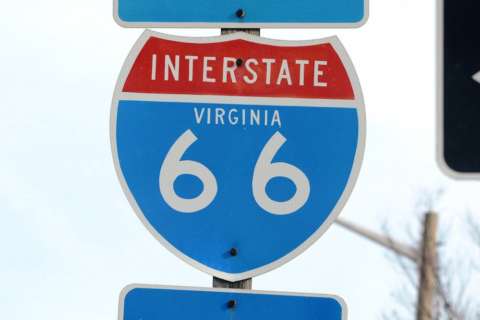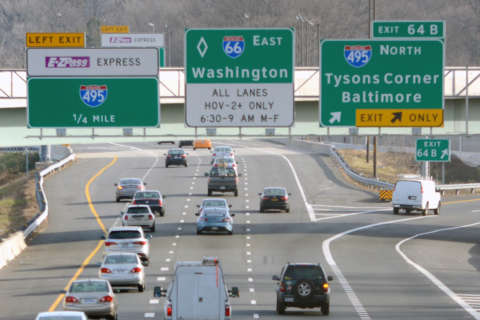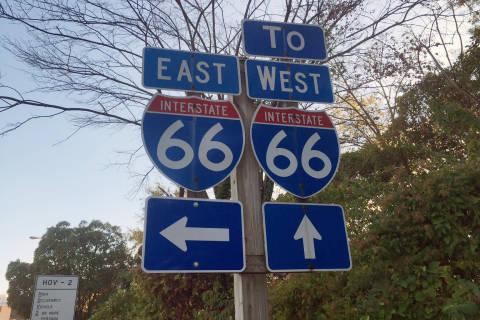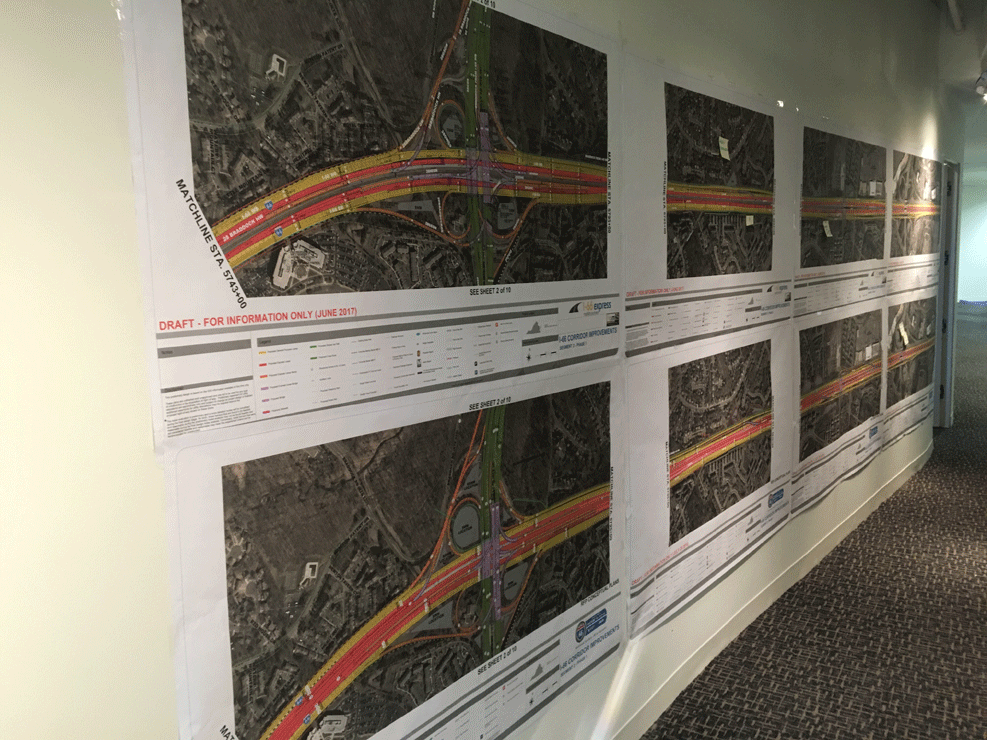
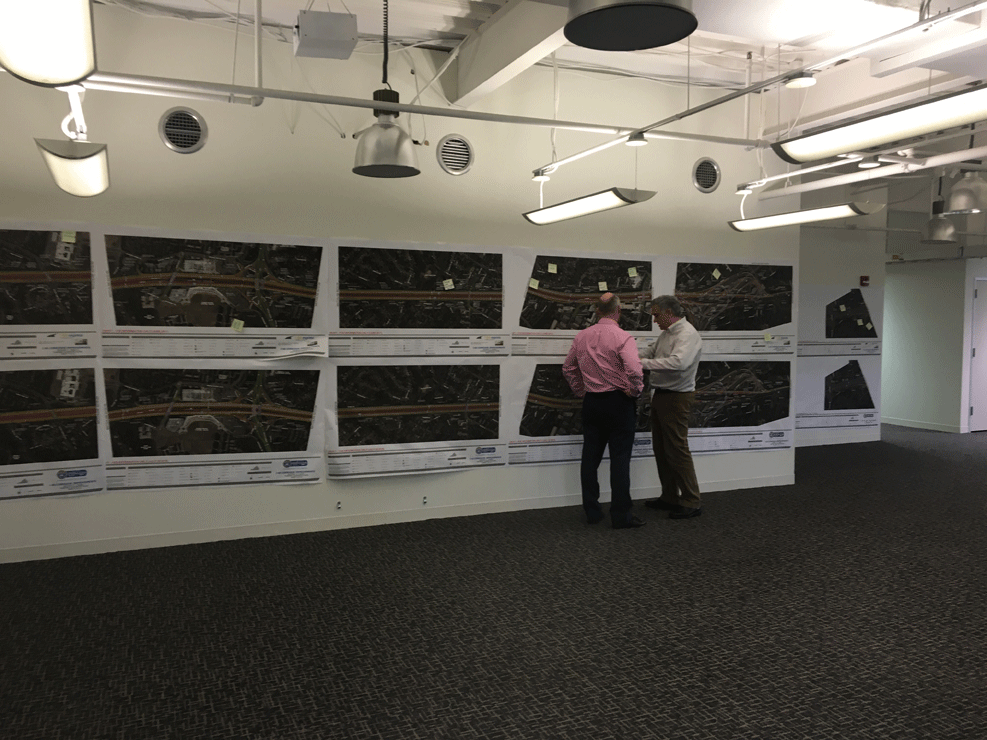
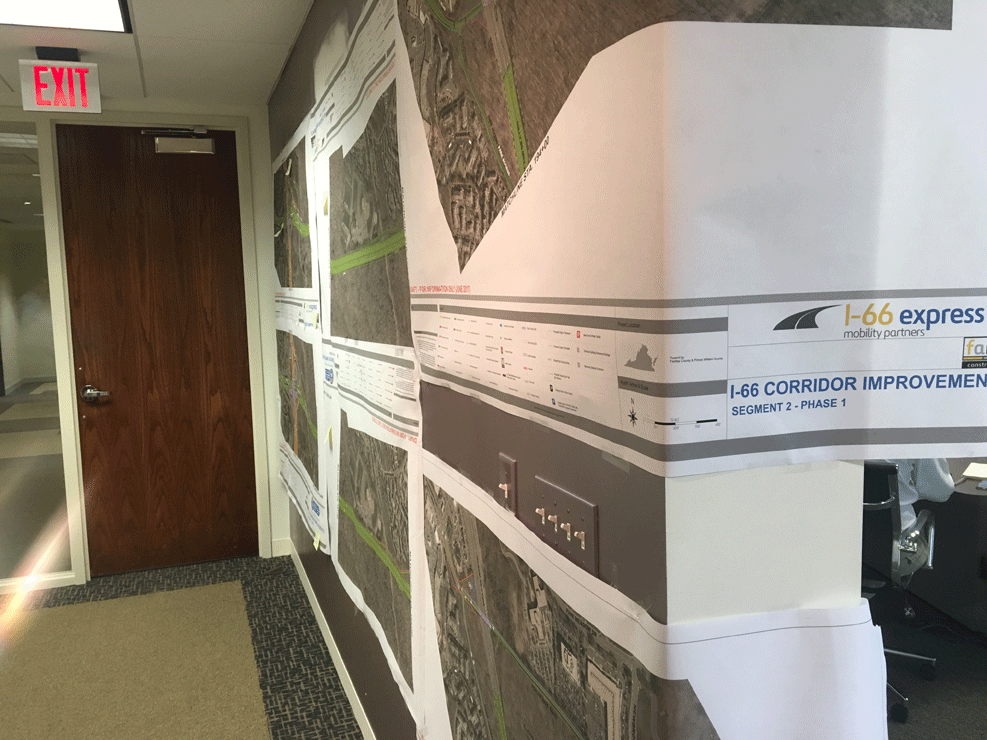
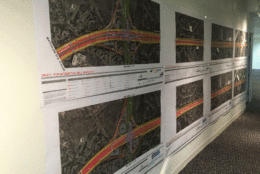
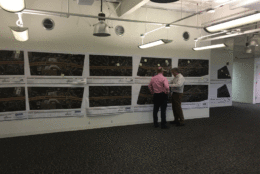
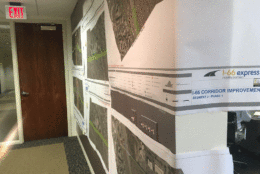
WASHINGTON — Newly revised plans for Interstate 66 toll lanes between the Beltway and U.S. 29 in Gainesville that will be formally presented to the public next week are nearly final, the private companies designing and building the lanes said.
Express Mobility Partners — a group including Spanish company Ferrovial Agroman, investment group Meridiam and large construction company Allan Myers — has added a number of on-ramp or off-ramps to the initial plans the Virginia Department of Transportation outlined last year along with a number of other tweaks.
The latest designs include some so-called diverging diamond interchanges where traffic above I-66 will cross to the left side of the road in either direction for smoother exits and entrances, updated estimates of where sound walls may be needed and additional connections between the HOV or toll lanes and the regular lanes.
“What they are going to see next week, conceptually, is pretty much our plan,” FAM Construction head Pablo Molla said in the group’s Fairfax offices.
On the walls, maps showing the proposed designs of the toll lane interchanges and related construction are marked with yellow sticky notes to identify tweaks that still need to be made.
The group has not finalized a design proposal in the Dunn Loring area to replace a ramp opposed by neighbors that would have avoided disrupting a Metro power substation. The designs do not include Fairfax County’s request for a new Monument Drive interchange, but the group is considering adding two ramps from other companies that competed for the project to add an additional ramp at the U.S. 50 interchange or an additional ramp at Route 286, the Fairfax County Parkway.
“In design-build, we’re constantly looking at things and refining the project, and narrowing down until we get so close to perfect that we can construct it,” FAM Construction spokesperson Nancy Smith said.
The two new toll lanes in each direction will be between three regular lanes and a shoulder each way along the 22-mile corridor. Right now, there is one HOV lane and three regular lanes in addition to the “red X lane” that functions as a shoulder outside of congested rush hour periods.
The new shoulder will not be used for traffic at any time.
“I think we forget that the Red X lane is actually the shoulder, and so it was never meant to be a travel lane, it was put in as kind of a Band-Aid for the conditions that we have,” Smith said. “By bringing back that shoulder 24/7, you’re actually improving corridor safety because you can get those accidents out of the roadway and then get people back on to driving.”
Like the separate 95 and 495 Express Lanes, these toll lanes will be free with three people in the car and an E-ZPass Flex switched to HOV mode. When the lanes open in 2022, other drivers can pay a toll to use the lanes that rise and fall to encourage or discourage more drivers from using the lanes. Express Mobility Partners is required under its contract with Virginia and based on federal rules to keep traffic moving in the lanes.
In response to opponents of toll lanes, Express Mobility Partners Director of Corporate Affairs Chris Doherty said the regular lanes should move faster if more people use the toll lanes, carpool or take the bus as well.
“You’ve got a choice of staying in general purpose lanes that are functional, with a shoulder so that, God forbid there be an accident or a breakdown, that doesn’t immediately cause a traffic jam … and you’ve got the option of the Express Lanes with more choices, and so choice has really been our mantra across the team,” Doherty said.
The project also includes eliminating a series of traffic lights on Route 28 by 2020, park and ride lots, and new support from the toll revenue for buses, slugging or carpooling.
Anyone impacted can offer input on the designs at public meetings Monday, Wednesday and Thursday evenings from 6 to 8:30 p.m. All comments can be submitted in writing or taken down by a court reporter.
- Monday, June 12, 2017
Oakton High School Cafeteria
2900 Sutton Rd., Vienna, Va. 22181 - Wednesday, June 14, 2017
Stone Middle School Cafeteria
5500 Sully Park Drive, Centreville, Va. 20120 - Thursday, June 15, 2017
Piney Branch Elementary School Cafeteria/Gym
8301 Linton Hall Rd., Bristow, Va. 20136
At the meetings, dozens of satellite images a few feet wide will be posted with the proposed designs for interchanges, sidewalks, park and ride lots and traffic lights overlaid on top.
For the two largest interchanges – the Capital Beltway and Route 28 – there will be 3-D computer models to show what the finished construction is projected to look like both from the road and from nearby homes.
“In general, what we’ve seen is common sense worries from the people, they are really involved, it’s a tight corridor … and the concerns that they have make sense,” Express Mobility Partners CEO Javier Gutierrez said.
People who live near the construction have raised concerns about noise, trees, neighborhood impacts and the height of new interchange ramps.
“They are worried about the right things, we are trying to do our best, but not always we can accommodate those things because we have to increase and widen the corridor in order to provide more capacity, but we are listening,” Gutierrez said.
Current designs call for eight homes to be taken as part of the $2.3 billion project. The complicated financing for the deal is due to be finalized next month.
“It’s going to happen for sure,” Gutierrez said.
After that, new noise and traffic studies are due to be completed by the end of summer that would indicate where new sound walls should be installed, among other things.
Following a public hearing this fall, very early construction work is expected to begin before the end of the year.
Assuming there are no significant hiccups, major construction would ramp up next spring and continue for the next four years over much of the 22.5-mile corridor.
“That’s a lot of work in a fairly short period of time, so we won’t be phasing from the Beltway to Gainesville like you might see on other projects and working our way in or out. What we’ve seen here today was three different segments that we’ve broken the project up in, and we’ll be working in each of those segments throughout the 4.5 years,” Smith said.
“The 66 that you see today and the 66 that you see in 2022 will be vastly different roads, and this will be the 66 that we’ll have in this region for the future,” she said.
The changes for the highway include separate rush-hour only tolls on Interstate 66 inside the Beltway that are due to begin later this year.

